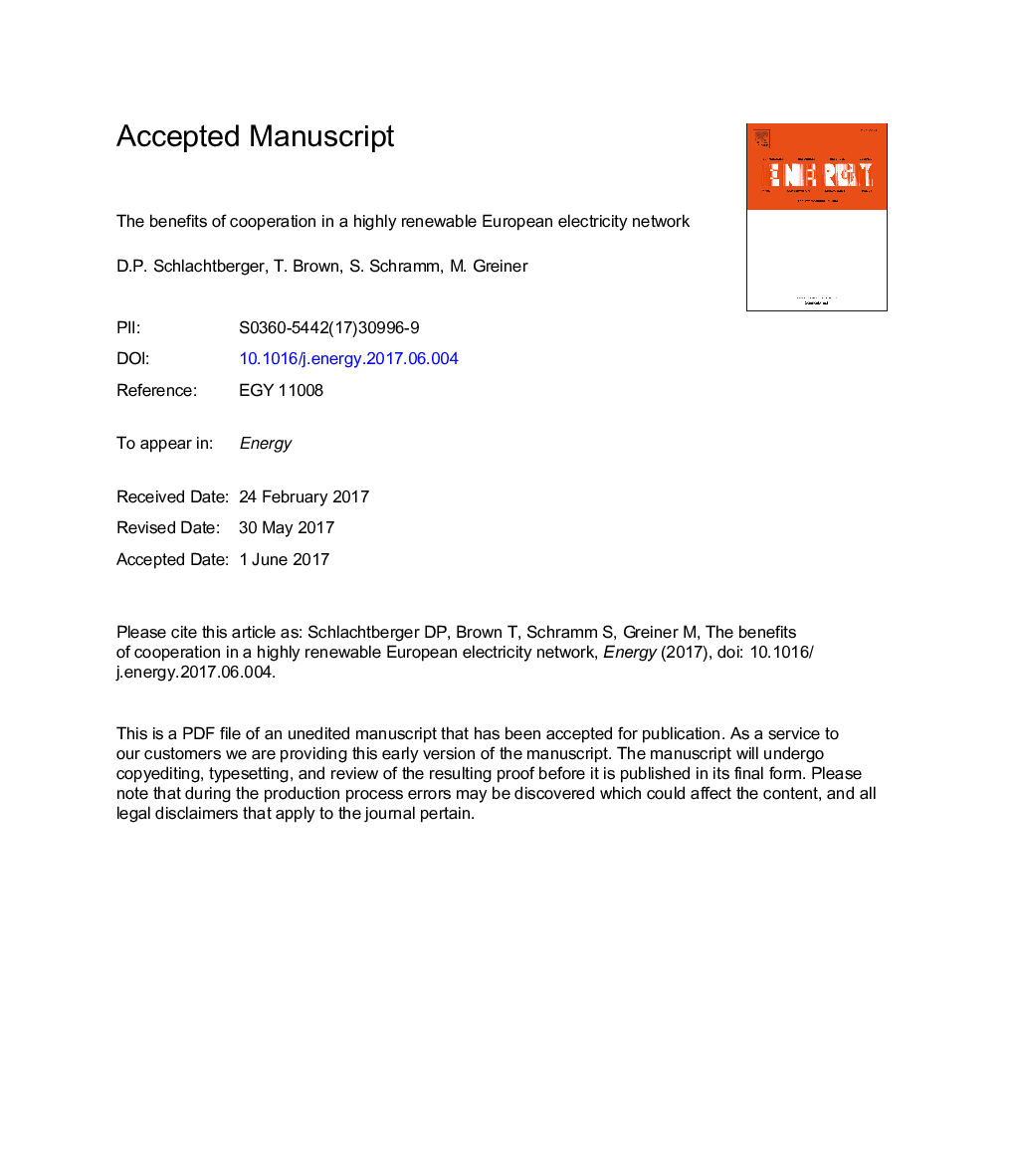| Article ID | Journal | Published Year | Pages | File Type |
|---|---|---|---|---|
| 5475848 | Energy | 2017 | 23 Pages |
Abstract
To reach ambitious European CO2 emission reduction targets, most scenarios of future European electricity systems rely on large shares of wind and solar photovoltaic power generation. We interpolate between two concepts for balancing the variability of these renewable sources: balancing at continental scales using the transmission grid and balancing locally with storage. This interpolation is done by systematically restricting transmission capacities from the optimum level to zero. We run techno-economic cost optimizations for the capacity investment and dispatch of wind, solar, hydroelectricity, natural gas power generation and transmission, as well as storage options such as pumped-hydro, battery, and hydrogen storage. The simulations assume a 95% CO2 emission reduction compared to 1990, and are run over a full historical year of weather and electricity demand for 30 European countries. In the cost-optimal system with high levels of transmission expansion, energy generation is dominated by wind (65%) and hydro (15%), with average system costs comparable to today's system. Restricting transmission shifts the balance in favour of solar and storage, driving up costs by a third. As the restriction is relaxed, 85% of the cost benefits of the optimal grid expansion can be captured already with only 44% of the transmission volume.
Keywords
Related Topics
Physical Sciences and Engineering
Energy
Energy (General)
Authors
D.P. Schlachtberger, T. Brown, S. Schramm, M. Greiner,
